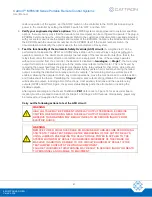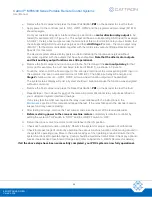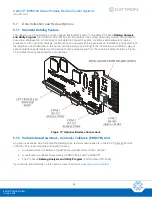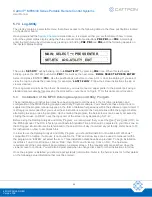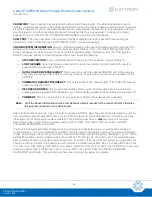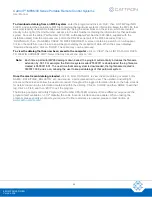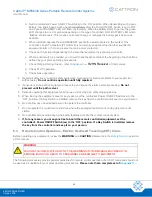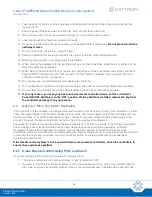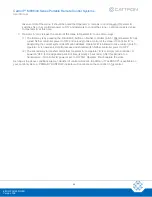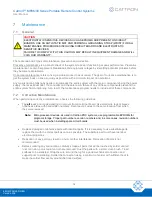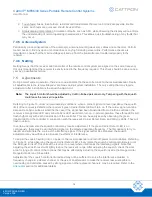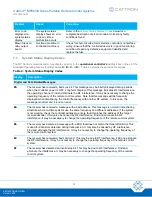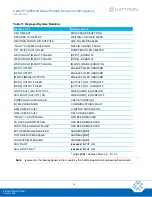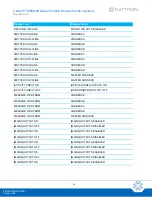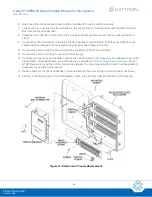
Cattron™ MP96/48 Series Portable Remote Control Systems
User Manual
71
68C-MP96/48-RD-EN
Version 006
•
Inoperative systems are normally repaired by circuit board substitution. If possible, the entire
EMI/RFI shielded electronic chassis (
the ‘Gold Box’) should be returned to Cattron for testing and
repair. Make sure all optional jumpers are properly configured and the proper address code and
frequency are set prior to applying power. Failed circuit boards should be tagged with a
description of the fault and sent to Cattron for repairs
•
Mount all replacement parts in the same location using the same mounting arrangement as the
previous part. Fasten all mounting hardware firmly
7.3
Preventive Maintenance
Every three months perform the
procedures described earlier in this manual. These procedures
provide a thorough check of the entire remote control system.
7.4
Typical Additional Checks
The following additional checks should be performed on a periodic basis. Simple visual checks of the equipment
provide a good early warning of any potential problems and take very little time to perform. Additional checks such
as fuses and power supply tests can be performed every three months when carrying out the
7.4.1 Primary Power Supply
Primary power sources should be the first step in performing preventive maintenance as they are always suspect
in problems dealing with AC circuits. The supply voltages can often be too high as well as too low. Loose
connections on fuses can occur even on an AC system. With the system de-energized, check
for ‘hot’ fuses and
connections.
7.4.2 Fuses
Fuses, sometimes even when new, may have too high a resistance. Check the fuse and replace if the voltage
drop across the fuse exceeds 0.1 V.
7.4.3 Fuse Holders
Fuse holders may loosen or corrode. Accumulation of oil and dirt increases contact resistance. If this occurs,
clean the contacts and tighten or replace the fuse holders.
7.4.4 Unit Assemblies
Unit assemblies include the receiver/decoder, controller and relay interface boards. To catch a maximum number
of problems the technician must use his ears, eyes, sense of touch and meter measurements, as well as past
experience and good judgment.
Three types of basic observation are required
:
1. Visual inspection: Check for loose bolts, screws and clamps, arcing condition and loose connections. A
good visual inspection not only means quickly locating a source of potential problems, but also may
prevent serious problems from developing later.
WARNING
DE-ENERGIZE AND TAG OUT ALL SOURCES OF ELECTRICAL POWER BEFORE
CARRYING OUT TOUCH TESTS ON EQUIPMENT. FAILURE TO PROPERLY DE-ENERGIZE
EQUIPMENT MAY RESULT IN DEATH OR SERIOUS INJURY FROM ELECTRIC SHOCK.
!

